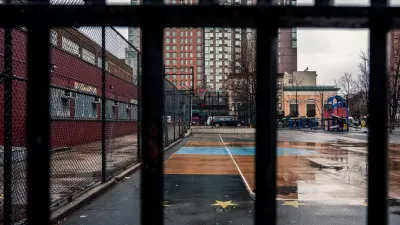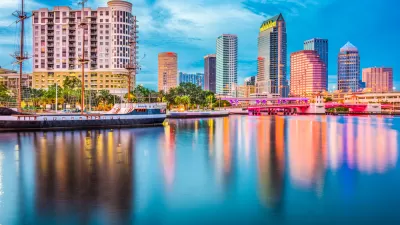In Las Vegas, Denver, Philadelphia, and more, out of town newcomers have been driving up real estate prices by moving in from more expensive locations with the resources to outspend locals, according to analysis by the Business Journals.

In a paywalled article for the Business Journals, Ashley Fahey shares data that reveals trends in domestic migration—namely from more expensive to less expensive metropolitan areas.
Fahey starts with the example of Las Vegas, and a pandemic influx of residents from the Los Angeles area:
Between Dec. 31, 2020, and July 31, 2022, the median home value of Clark County, Nevada, where Las Vegas is located, increased 44.6%, from $313,778 to $453,764, according to Zillow Group Inc. (Nasdaq: ZG) data.
Heading into (and during the first year of) the pandemic, Clark County saw the largest number of out-of-state relocations from a single county — Los Angeles County, California — than any other in the U.S., with 6,856 tax filers moving from Los Angeles to Clark counties in 2019 and 2020, according to an analysis of U.S. Census and Internal Revenue Service data by The Business Journals.
The data behind those paragraphs allows for more national analysis that might be worth the price of admission for some readers. While the Las Vegas to Los Angeles leads the list of largest out of state migration patterns in 2019 and 2020, next up are Prince George’s County, Maryland and Washington, D.C., followed by Lake County, Indiana and Cook County, Illinois; Hudson County, New Jersey and New York County, New York; and Maricopa County, Arizona and Los Angeles County.
Fahey’s conclusion after parsing all this data: the trends I migration seen in the early months of the pandemic might not have been new, but the pandemic did press pass forward—the counties and cities on the receiving end of these population shifts might have had more time to prepare if these changes had happened at a more normal pace.
FULL STORY: Tracking the housing impact of households moving from pricey coastal markets to boom cities

Maui's Vacation Rental Debate Turns Ugly
Verbal attacks, misinformation campaigns and fistfights plague a high-stakes debate to convert thousands of vacation rentals into long-term housing.

Planetizen Federal Action Tracker
A weekly monitor of how Trump’s orders and actions are impacting planners and planning in America.

In Urban Planning, AI Prompting Could be the New Design Thinking
Creativity has long been key to great urban design. What if we see AI as our new creative partner?

Portland Raises Parking Fees to Pay for Street Maintenance
The city is struggling to bridge a massive budget gap at the Bureau of Transportation, which largely depleted its reserves during the Civd-19 pandemic.

Spokane Mayor Introduces Housing Reforms Package
Mayor Lisa Brown’s proposals include deferring or waiving some development fees to encourage more affordable housing development.

Houston Mayor Kills Another Bike Lane
The mayor rejected a proposed bike lane in the Montrose district in keeping with his pledge to maintain car lanes.
Urban Design for Planners 1: Software Tools
This six-course series explores essential urban design concepts using open source software and equips planners with the tools they need to participate fully in the urban design process.
Planning for Universal Design
Learn the tools for implementing Universal Design in planning regulations.
Gallatin County Department of Planning & Community Development
Heyer Gruel & Associates PA
JM Goldson LLC
City of Camden Redevelopment Agency
City of Astoria
Transportation Research & Education Center (TREC) at Portland State University
Jefferson Parish Government
Camden Redevelopment Agency
City of Claremont





























